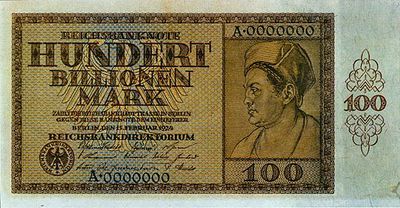
How can our brains process Venezuela’s mind-blowing
inflation rate of 14,000%—or the 1 million percent it could reach by the
end of the year? As extraordinary as
Venezuela’s currency crisis might be, it’s far from the worst case of
hyperinflation.
In Hungary after World War II, annual inflation peaked
at 419 quadrillion percent (that’s 419 with 15 zeroes). The daily inflation
rate was 207%, and prices doubled every 15 hours, according to research from
Johns Hopkins economist Steve Hanke.
Even more notorious is the experience of Weimar
Germany in 1922 and ‘23, where inflation hit 29,500%. You needed 1
US dollar to buy 1 trillion German marks in November 1923. It took prices 4
days to double in Weimar Germany
The hyperinflation of the Weimar Republic has left a
deep scar in the German psyche. It’s been used to explain Germans’ deep
aversion to debt and subsequent preference for cash to pay for almost
everything.
The crisis of 1922 and ‘23 primarily affected the
middle and upper classes—the strata of German society that had socked away
money in savings accounts. While the poor also suffered the wealthy were
totally wiped out.

